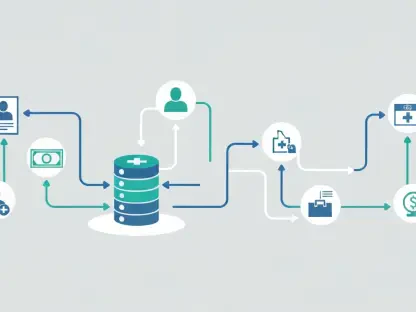The Object Management Group (OMG), a leading organization in technology standards, has embraced the Systems Modeling Language (SysML) version 2.0 specification—a considerable leap forward in model-based systems engineering. Alongside this, the adoption of the Kernel Modeling Language (KerML) version 1.0 and the Systems Modeling Application Programming Interface (API) and Services specification version 1.0 signifies a transformative moment for the industry. With enhancements in precision, expressiveness, and interoperability, SysML v2 is poised to address the complexities of modern systems more effectively than its predecessor. Moreover, this advancement highlights the collaborative efforts to transition systems engineering into a discipline that fully utilizes modeling.
Enhancing Model-Based Systems Engineering
Precision and Expressiveness
SysML v2 is a groundbreaking tool that significantly improves precision and expressiveness in system modeling, offering a notable upgrade over the previous version, SysML v1. The refined capabilities allow engineers to create detailed representations of complex systems, which encompass intricate structural hierarchies and sophisticated behavioral dynamics. These improvements ensure that models accurately reflect real-world scenarios, facilitating precise analysis and simulation. By enabling more expressive modeling options, SysML v2 empowers engineers to specify requirements with greater clarity, fostering improved system comprehension.
Additionally, SysML v2 introduces both textual and graphical model representations, providing versatility in how models are created and interpreted. This adaptability enhances user engagement and understanding across diverse stakeholder groups, ranging from system designers to project managers. Through these refined tools and methodologies, SysML v2 supports more effective communication and collaboration across engineering teams, promoting seamless integration of various system components. Consequently, organizations leveraging SysML v2 can expect streamlined processes and better alignment with project goals and requirements.
Usability and Interoperability
Usability is at the forefront of SysML v2’s design, addressing the challenges faced by engineers in managing multifaceted projects. This version focuses on simplifying the interaction with modeling tools, making them more accessible to a broader range of users. Enhanced interfaces and intuitive features reduce the complexity associated with previous versions, while streamlined workflows facilitate efficient navigation through vast amounts of data. Such improvements in usability directly contribute to more productive engineering environments, maximizing the potential of systems modeling practices.
Interoperability remains a crucial aspect of SysML v2, promoting seamless integration with existing tools and applications. The standardized API and services ensure that models can be easily navigated, queried, and updated across various platforms, eliminating barriers to cross-functional collaboration. As systems grow more complex, this harmony among tools and applications is vital to maintaining comprehensive oversight throughout a system’s lifecycle. The SysML Community continues to develop a reference implementation and conformance test suite, guaranteeing that tools align with these updated specifications. This commitment to interoperability propels SysML v2 into a future where diverse systems engineering challenges can be adeptly managed.
Shaping the Future of Systems Engineering
API and Services Specification
The integration of the Systems Modeling API and Services specification version 1.0 with SysML v2 marks a milestone in standardizing how models are accessed and modified. These standardized services are designed to facilitate model interaction across various stages of a system’s lifecycle, enhancing collaborative efforts by ensuring consistency in data handling. By enabling engineers to efficiently query and update models, this specification optimizes workflows, fostering timely decision-making processes. Moreover, this aspect of SysML v2 supports the continuous evolution and adaptability of systems modeling practices.
The API and services specification introduces robust mechanisms that enable interoperability among different tools and applications, bridging the gap between traditionally disparate systems. This seamless integration encourages the cultivation of ecosystems where shared knowledge and resources lead to improved project outcomes. Organizations adopting these specifications can better leverage advanced technologies, positioning themselves at the forefront of modern systems engineering methodologies. The synergy between SysML v2 and its API enhances organizational capabilities, driving innovation and competitive advantage.
Strategic Adoption and Future Implications
The Object Management Group (OMG), a pivotal entity in developing technology standards, has welcomed the Systems Modeling Language (SysML) version 2.0 specification, marking a significant advancement in model-based systems engineering. This update, along with the introduction of the Kernel Modeling Language (KerML) version 1.0 and the Systems Modeling Application Programming Interface (API) and Services specification version 1.0, represents a pivotal moment for the field. SysML v2 enhances precision, expressiveness, and interoperability, equipping it to manage the intricacies of contemporary systems more effectively than its previous version. These changes underscore a collective push to evolve systems engineering into a discipline that leverages the full potential of modeling. The adoption of these standards showcases a collaborative effort among industry leaders to ensure that systems engineering is more robust and comprehensive, effectively pushing the boundaries of what’s possible in technology and paving the way for future innovations.









